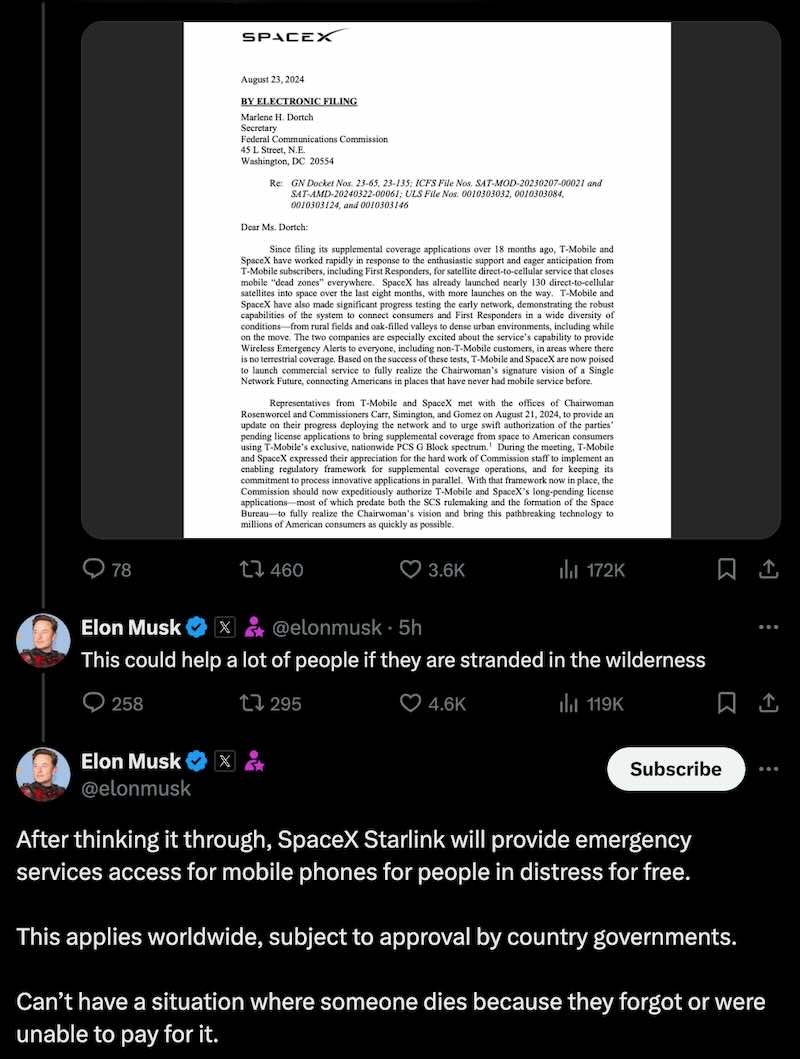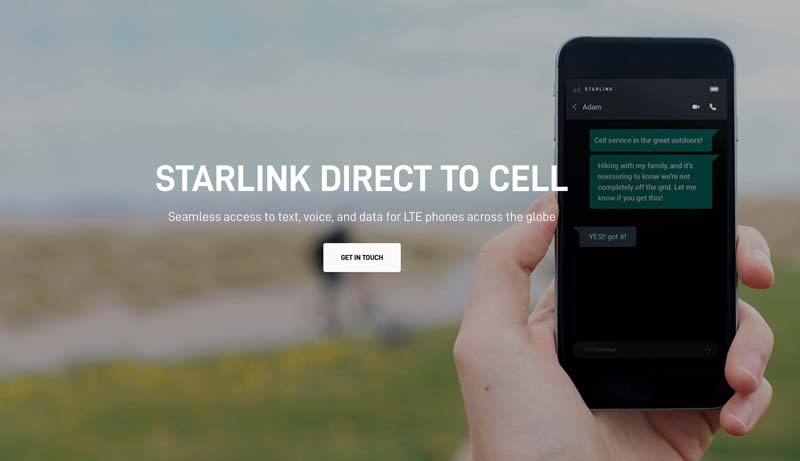SpaceX has unveiled plans to expand its Starlink Direct To Cell technology, potentially transforming emergency communication in areas without cellular coverage. In a recent letter to the Federal Communications Commission (FCC), the company outlined its ambitious strategy to provide emergency alerts to all wireless users in cellular dead zones, regardless of their service provider or subscription status.
The proposed system would enable Starlink to broadcast emergency alerts to any mobile device within range of its satellites, even if the user hasn’t subscribed to Starlink’s services or is not a T-Mobile customer. This universal approach to emergency communication could significantly enhance safety measures for individuals in remote or underserved areas.
SpaceX’s proposal has met with resistance from industry giants AT&T and Verizon, (SpaceX vs AT&T & Verizon: The Battle for Cellular Starlink), who have urged the FCC to deny SpaceX the necessary waiver to operate cellular Starlink satellites. These telecommunications behemoths have partnered with AST SpaceMobile to launch their own competing satellite internet service for mobile phones, highlighting the intensifying competition in the satellite-based communication sector.
SpaceX CEO Elon Musk has emphasized the humanitarian aspect of this technology, stating that it could be a lifeline for people stranded in wilderness areas. In a bold move, Elon announced that SpaceX Starlink would provide free emergency services access for mobile phones worldwide, subject to approval by individual country governments. This decision underscores SpaceX’s commitment to prioritizing safety over profit in emergency situations.

The implementation of this technology could have far-reaching implications for global communication infrastructure. By providing a safety net in areas where traditional cellular networks are unavailable, Starlink’s ‘Direct To Cell’ technology could become an essential component of emergency response systems worldwide.
SpaceX push the boundaries of satellite communication technology, it’s clear that the company is not just reaching for the stars – it’s bringing them down to earth in the service of global safety. This initiative could potentially star-link millions of people to lifesaving emergency services, regardless of their location or cellular provider.
Related Post
SpaceX Starlink Constellation Nabs FCC Approval for Next-Gen Satellites Upgrades
Starlink Mini: Monroe County’s Cosmic Connection for Law Enforcement
